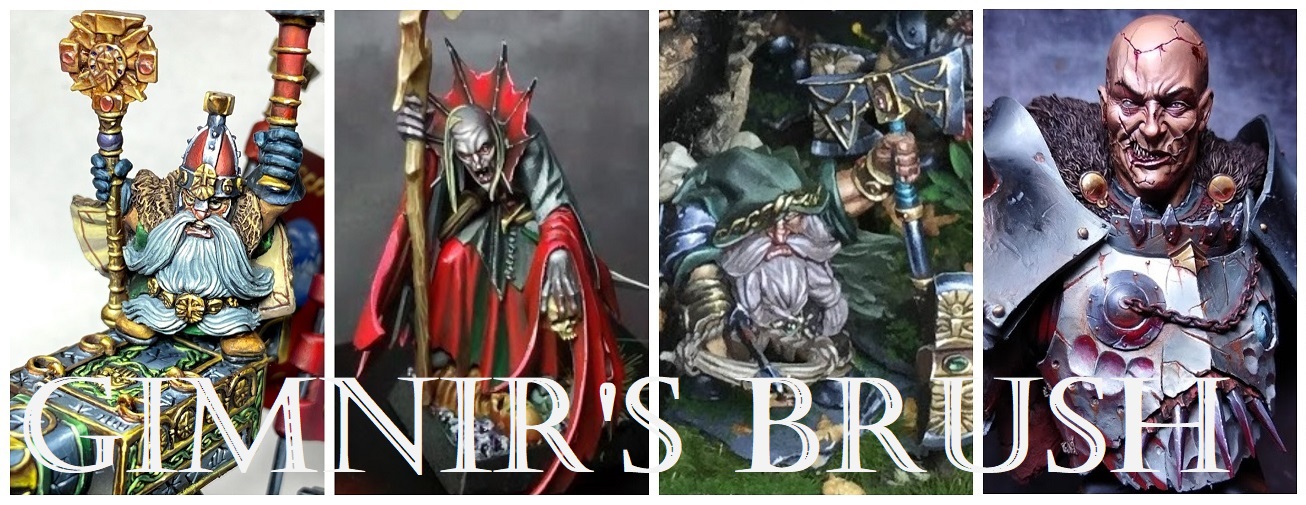25/02/2024
Elven Prince on Lion
11/02/2024
TUTORIAL: How to paint yellow in 8 Easy Steps
Greetings! Today, I'm thrilled to share with you a quick tutorial on how to paint yellow.
Now, before we dive into in, let me throw in a quick disclaimer – there are numerous ways to achieve a yellow hue, and what I'm about to reveal is just one of the many chromatic variations out there. But hey, if you're a fan of the yellow on my Warhammer Night Goblin Banner, then buckle up because here comes the methodology!
MATERIALS
Let's start by gathering our artistic arsenal:
- Citadel Chaos Black primer
- Liquitex Titanium White acrylic ink
- Vallejo Bright Orange 70.851
- Vallejo Deep Yellow 70.915
- Vallejo Ice Yellow 70.858
- Vallejo Gold Brown 70.877
- Citadel Gore-Grunta Contrast
- Golden Artist Colours Titanium White
For the application process, you'll need some additional materials (check out my essential materials blog post for more info if you need to), assuming you've already got them handy.
8 EASY STEPS TO PAINTING YELLOW
Step 1: Begin by applying the Citadel Chaos Black primer to your miniature .
Step 2: Highlight the miniature with Liquitex Titanium White ink to create that zenithal lighting effect. This step is key as it sets the stage for the brilliance to show in the next steps.
Step 3: Apply Vallejo Bright Orange to the areas covered with the previously applied white. The white base acts as a canvas, intensifying the saturation and brightness of the orange.
Step 4: Apply a 50% mix of Bright Orange and Deep Yellow.
Step 5: Apply Deep Yellow with precision, avoiding coverage of the layers from steps 3 and 4. We're building layers here, people!
Step 6: Mix 75% Deep Yellow with 25% Ice Yellow and apply in controlled areas where the light shines most brilliantly. Think that these areas are usually perpendicular to the light source.
Step 7: Utilize a mix of Bright Orange and Gore-Grunta Contrast in areas revealing the black primer, adding depth and contrast.
Step 8: Finishing touches:. Apply Golden Acrylics Titanium White to the highest points of light, such as the moon tips, nose, and selected areas in the eye wrinkles. For the pièce de résistance, simulate reflection rays in the maximum shadow areas using a desaturated yellow (Vallejo Gold Brown).
And there you have it – an easy way of painting yellow!
Until next time, may your brushes be steady, your dice be kind, and your victories be sweet.
Best regards










